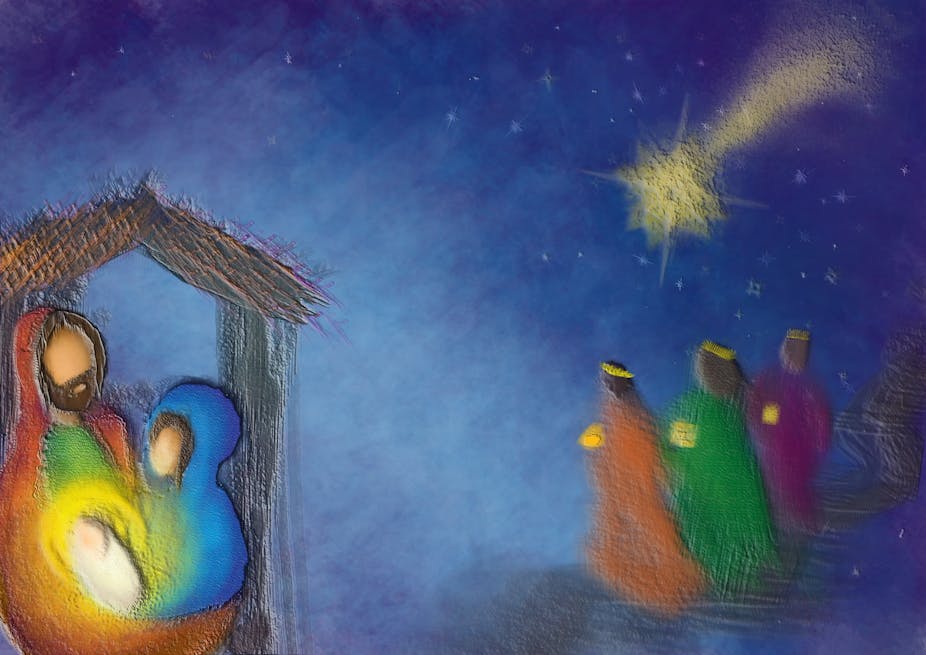Wherever you stand on Cliff Richard, his 1988 number one, with its message that “Christmas is love, Christmas is peace” and “a time to rejoice in the good that we see”, succinctly summarises the common festive view of Christianity. From Christmas music to cards to charity TV adverts, we are continually reminded at this time of year of the positive values that Christianity can promote: love, peace, giving, receiving – and seeing goodness in others.
Many people would argue, however, that it is wrong to think of Christianity or any other faith in such purely positive terms. Religion can surely be a force for good and bad, depending on the message and the messenger. It is perfectly possible to celebrate the virtues of Christian compassion while recognising problems with everything from creationism to some religious attitudes to homosexuality.
Yet according to our latest research, many religious education (RE) teachers in UK schools are encouraging pupils to take a similarly unbalanced view of their subject all year round. This is doing learners and the subject a major disservice, and needs to change.
Religion and danger
As RE teacher educators, we decided to find out how religion is understood and being taught in UK schools. We carried out the largest study of its kind, collating survey responses from 465 RE teachers in secondaries as well as primary, junior and middle schools across the country.
As part of the research, a total of 389 teachers responded to the statement “religion is dangerous”. The majority of respondents thought it was not dangerous: 37% selected “not at all” and 28% answered “slightly agree”. This was regardless of whether they believed in a god or gods, were agnostic or were atheist. Indeed, of 431 teachers responding about their beliefs, only 45% identified themselves as theist. Of the remainder, 18% were atheist, 31% agnostic and the rest described themselves as “other”.

From the 185 teachers who added comments, 39% implied that religion is in essence good – that is, to define “religion” in negative terms is wrong, for it cannot be other than positive. The following comment from a teacher in an English secondary academy sums up what was being said:
We teach general tolerance to all people, of all religions and that all religions teach peace, love and compassion, with the odd exception where there may be extremists who misinterpret their holy books, but that they exist within all religions and that they are not true followers .
It is worth reflecting on that view for a moment. It notes negative “extremist” aspects to some religions, but says that such followers are “not true followers”. Rather, they “misinterpret their holy books” – the implication being that a correct interpretation of the religious text can only result in “peace, love and compassion”. It is not religion that is dangerous, in other words; but people who are dangerous.
To quote a couple of teachers from English state primary schools:
All religions are peaceful. It’s certain extremist people who misuse/misinterpret religion to create barriers and hate amongst people.
I think that people choose to use religion in a dangerous way, to support their own beliefs, but that religion itself is not intrinsically dangerous. I cannot think of a religion that actively supports dangerous ideals.

Put simply, this is bad education – however well-intentioned. It sanitises religion. It cleanses it of negativity, destructiveness and anything antisocial, leaving it sparkling with ideals to which humankind can aspire. It also wrongly puts all religious expressions on the same footing – when in reality they are diverse and multifaceted. Pick any religion and you find a spectrum of practices and beliefs – and at times diametrically opposed understandings on everything from war to marriage to perspectives on what it means to be human.
It is wrong, for example, to imagine that terrorists have always “twisted” their religion from its “true” form. They follow a nefarious, destructive form of religion, but it is still religion. To imply otherwise presents young people with a view that doesn’t fully reflect how they experience religion in contemporary society – where it can motivate great acts of kindness, but also atrocities.
Alternatives
So what might RE teachers do instead? Some in the profession are already setting an example by avoiding expressions like “Hindus believe…” or, worse, “all Hindus believe…”, in favour of “while some Hindus believe, others…”, or “the majority of Hindus believe… while a minority believe…”. Teachers can also embed the concept of plurality within individual religions by using terms like “Christianities” and “Islams”.
It is also important to make sure that the diversity of religions is reflected in classroom displays and teaching aids. If possible, for example, invite several Buddhists rather than one to talk about the concept of “rebirth”. Avoid using stereotypical images, such as only showing Muslim women wearing headscarves, when it’s less common in the likes of Morocco or Jordan.

All religions have loving and hateful expressions: in history, Christianity has motivated great acts of human kindness, but has also been used to justify violence. Religion is no more good than bad, no more antisocial than prosocial. Young people need to be encouraged to develop a mature view which is able to encompass and reflect the best and worst of religious expression – and all the shades in between.
Yes, this makes the task for RE teachers more challenging – not least at this time of Christian “goodwill”. But it also reaffirms the educational value of the subject and its rightful place in UK curricula.

